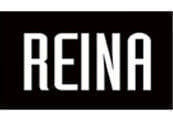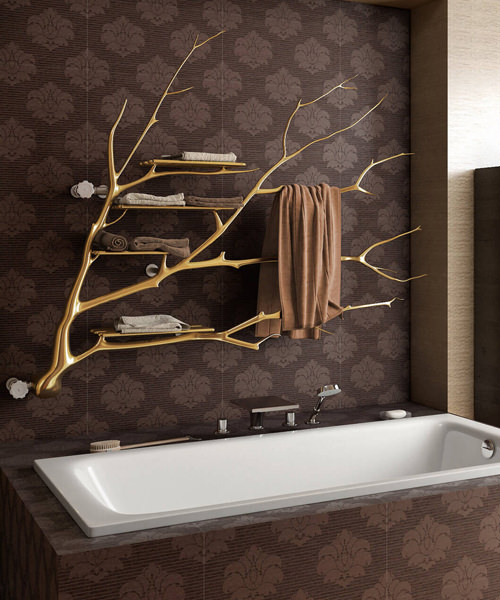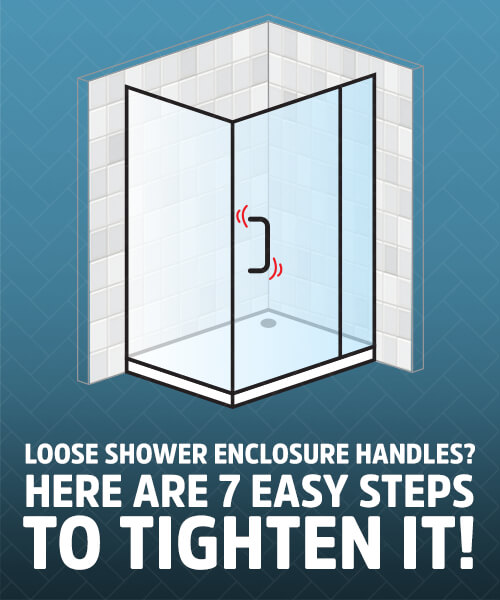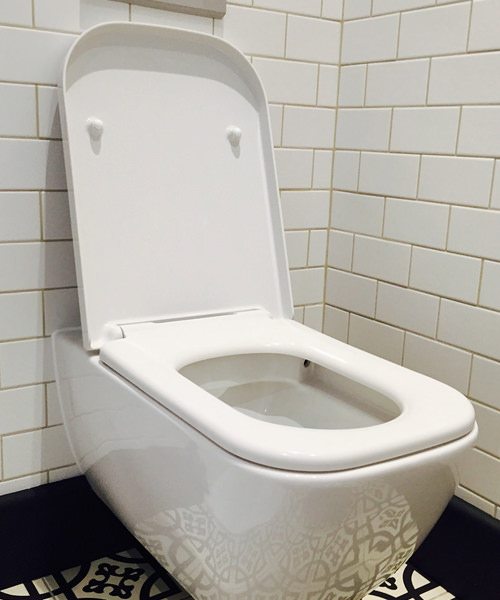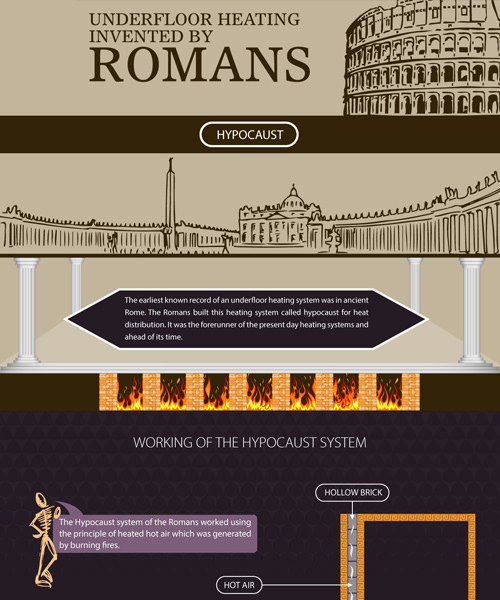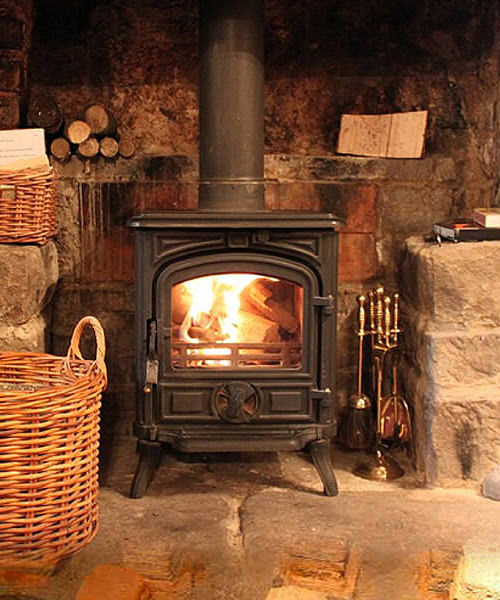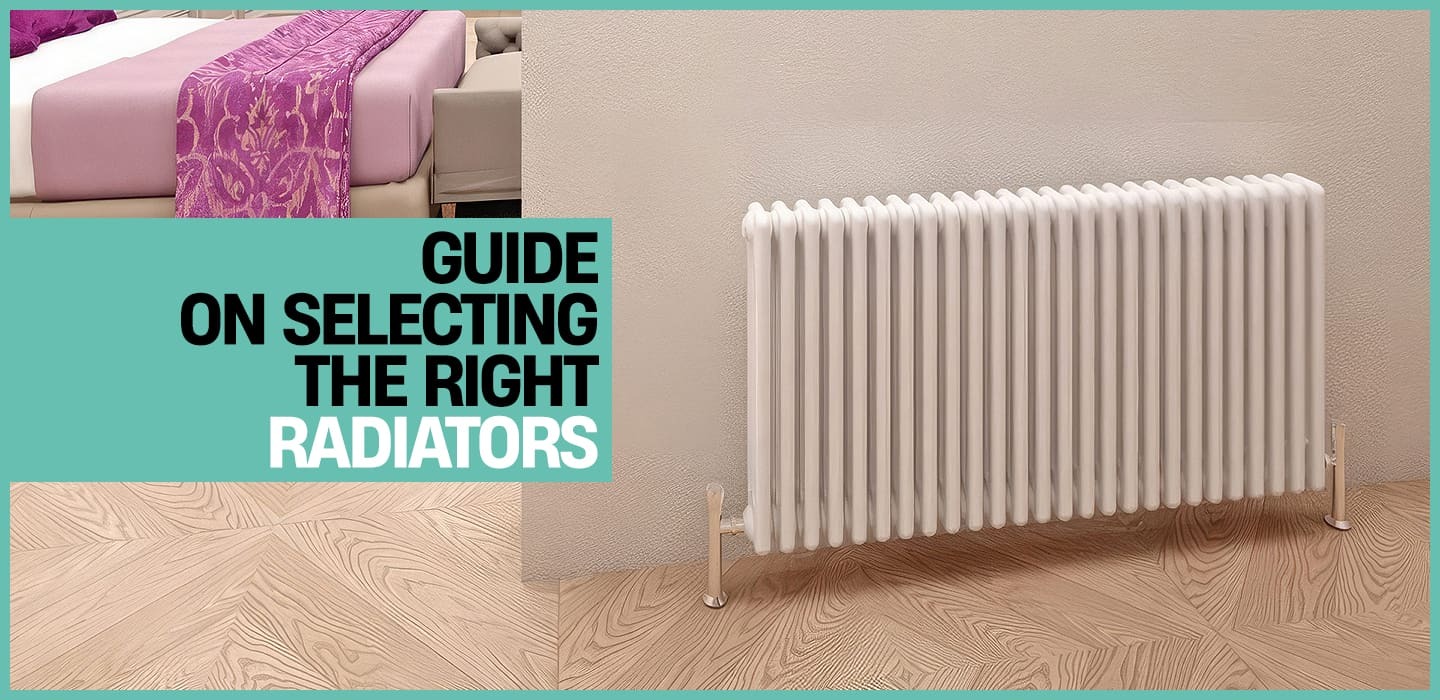
Taken for granted, but a game changer: In today's modern setting, the use of central heating radiators has been trivialised. The sight of radiators, thermostatic controls and valves in any home or commercial setting will not turn heads; these are commodities that are simply taken at face value. It may sound like a modern contraption, but central heating has been traced back almost 2000 years, and the first systems were found amongst remains belonging to the Romans
.However, the concept of central heating is a fascinating one, and today's systems are both strikingly similar in principle, yet masterfully evolved, from the first central heating systems that were designed. Check out our history of heating timeline, to know more about history of heating.
Know Central Heating System First!
Selecting the right system can be a bit confusing. Here, we have provided few useful tips, tricks and suggestions. First, you need to determine, which heating system is right for your home? The boiler that you choose will have an impact on the amount of energy you use. There are many different boilers on the market right now, and this can make it hard to choose the right one for your home.
There are currently two different types of boilers available in the UK. Choosing the right one will ensure you get heat and water exactly when you need it. Recent laws require that all boilers in UK homes must be condensing boilers. What this means that any heat that would normally be lost is re-circulated within the system. By reusing wasted heat, you could save up on huge energy costs. Some designs can offer up to 96 percent efficiency. There a few subcategories of boilers to choose from. These are combi, system or conventional.

Conventional boilers
These boilers come with a storage tank that holds water. A conventional boiler will heat up the tank of water, where it is stored until you need it. The difficulty with this type of boiler is that once all the hot water is used it could take a while for it to heat up again. The good news is that modern water tanks can store a lot of hot water, so you will be able to get around two good size baths out of a single tank.
Because you need to connect a hot water cylinder to your system these boilers often take up a lot more room than other types, this often makes installation a little more difficult, but the good news is that modern conventional boilers are usually very energy efficient and can be set to ensure your home is heated quite nicely.
Combination boilers
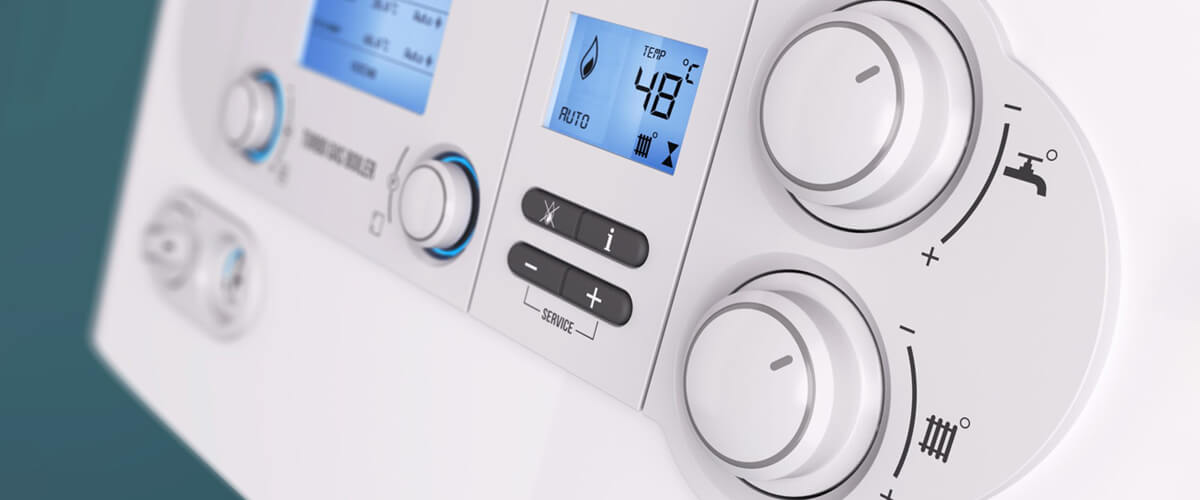
Known as ‘Combi’ boilers, these boilers heat water straight from the mains. This means no storage tank is needed and you can get as much hot water as you need, whenever you need it. What is more is this type of boiler is ideal for smaller houses where there may not be a lot of room. Combi boilers are also good because you get the benefit of mains pressure, so you will not need to buy an extra shower pump so you can enjoy a good flow of water.
This type of boiler is great when it comes to heating your home as it can take just minutes to heat your radiators, giving you warmth when you need it. There is a slight disadvantage to owning a combi boiler, however, as water, pressure may be affected if there is a demand for water by more than one appliance.
Therefore, if the washing machine is asking for water, and someone decides to turn the tap on in the bathroom, the pressure is likely to fall. Combination boilers and their associated radiators are extremely popular options. As water is heated directly from the mains, there is no need to wait to achieve the desired temperature. Therefore, a combi boiler does not require a water tank or a hot water cylinder. They are quite small, and most will not employ an external tank. So, a “combi” boiler is perfect for smaller homes or apartments that will not require a massive heating capacity.
System Boilers
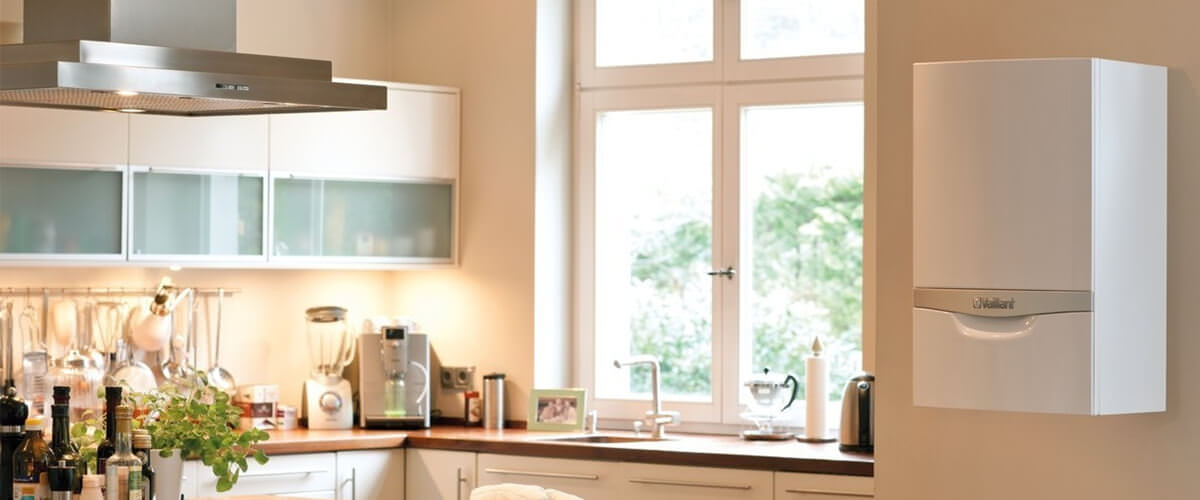
A system boiler works by supplying heat to central heating and hot water to your storage cylinder. It is a heat only boiler having a working principle similar to a regular boiler; however, additional components such as expansion vessel and a pressure release valve are built into the boiler. It is necessary to include hot water storage tank for storing the heated water, but it doesn’t need a cold water tank.
System boilers are the perfect solution for households with more than one bathroom and high water demand. These, therefore, require a bit of extra room. The main benefit of these systems is that hot water can be run from numerous locations without heat being lost. Sealed systems are commonly used in average-sized homes.
This type is a system comprises of many components along with the boiler itself. These include heating controls, hot water cylinder, a cold water storage tank and a feed and expansion tank. Such a system comprises two tanks located in the loft. One tank draws in cold water from the mains supply while the other feeds the boiler and manages heated water.
Another critical component when selecting the right system revolves around the type of fuel that you desire. This will deal with cost as well as the type of system employed. Some energy sources include LPG, oil, natural gas and electricity. Over a ten-year period, natural gas is the cheapest option to choose with minimal environmental impact.
The final concern is from a more practical point of view. It may be difficult to install certain systems within older homes or those with limited space. Keep in mind that central heating radiators and their associated systems are very real investments and they can add a great deal of value to your home. Here are a few tips that may just help at the time of selecting a boiler:
- Think about the size of your property and how many rooms you’ll want to heat
- You will also need to consider how many people are likely to want to use water at the same time. If there are more than two of you living in your home you may need to ensure you get a boiler that won’t leave you with huge energy bills.
- Do you need to get an efficient boiler? Are you determined to get the most out of your boiler, while paying as little as you can? The most energy efficient boiler is an ‘A rated’ one; it will cost a bit more, but the extra cost will be recouped in lower bills for years to come.
- Look for a boiler that will give you water and heating when you need it. If you’re only likely to use a little each day, a conventional boiler may be better for you. If you think there’s going to be a large demand for water, then you may want to opt for a combi boiler so your hot water will never run out.
How Can You Reduce Central Heating Costs?
There are several methods to help reduce the cost of heating during the colder months of the year. It is critical to check the insulation of a home, for hundreds of pounds can otherwise be spent heating the great outdoors. Should you find that your central heating radiators are not functioning properly, you then need to check suspicious spots such as an attic.
Improper insulation can have a drastic effect on heat loss. Should you notice ice dams on the edge of your roof, this is likely the cause. However, also check for drafts around windows and doors. If you have the option, purchase double-glazed windows for added protection. A few other tips and tricks are:
- Check to make sure your heating systems are running efficiently
- Make certain that pipes are properly protected from the cold.
- Open the blinds on your windows during sunny days to allow more light and warmth to enter.
- Have an energy audit done to determine where you actually are losing heat, then address those issues. Most effective method and least costly in the long run.
What is the Difference between Underfloor Heating and Central Heating?
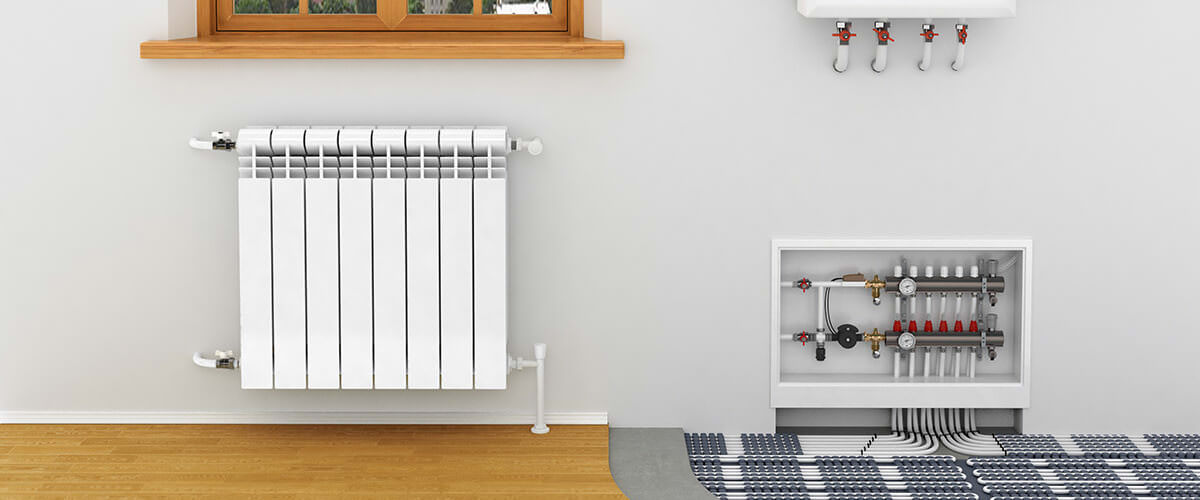
The primary difference between these two systems is how the heat is distributed. Central heating will make use of radiators, baseboard heaters and circulation systems to pass air through an environment. Underfloor heating (also known as radiant heating) employs a system of flexible pipes below floors such as tile or wood that heats the objects in the room, making it more efficient than other systems. However, such systems can be expensive, and not all floors will be able to accommodate the installation requirements.
Underfloor Heatings
Trends for Heating have changed. Priorities have mutated with the times, and in the indoor climate control and management sphere, numerous innovations have taken place. Under Floor Heating system is one of them, arraying in the list of convection or radiation or, for the most part, thermal comfort.
Supposedly, technology has superseded the axioms of “severity of climate can never be controlled.” As the chronology goes back into the history, it is said inhabitants of islands of Alaska and Asia created smoke lighting fire with the help of stones in the boroughs dug for the flames to shoot up, in order to exude heat. Though primitive, they served a purpose; later, hearths were discovered and then evolution of electrical cables or pipes filled with fluid occurred.
Innovations have transitioned with the changing times; the inventions have taken the frontline in the global context, and Under Floor Heating system adds to the list. Working with diverse solutions, they have been extremely prolific in emitting heat from small rooms, bathrooms and to the entire house. Tips Before Getting Underfloor Heating Installed:
- Surfaces, room conditions and the type of material are some of the factors to be borne in mind just before getting installations done.
- In an insulated home, higher power consumption is bound to happen if it’s a stone or tile flooring, in comparison to laminate or wooden flooring. So, take a judicious call before the installations.
- The conductivity of ceramic material allows heat to the cable of under floor heating speedily; although the surface nature of ceramic tiles has been known for feeling cool under human feet in the absence of an underfloor heating system.
You have the opportunity to skim over to choose from an endless list of Border Tiles viz. Mosaic, Brick, Victorian, Designer & Pattern, Glass, Metallic & Silver, Skirting, Inset, Quadrant & Bath-trims, and so on.
Disadvantages of using Central Heating
The disadvantage of central heating is the cost involved as it requires water which is heated and constantly pumped through the home. All appliances in this process are expensive to run. Safety is also a concern for many. Boiler leaks are common in situations where they have degraded but not been replaced, or have been installed by non-accredited contractors; the consequences of neglecting such a system can, and have been, lethal.
It is important to remember, therefore, that any central heating system should be installed by an accredited and trusted plumber. The cost associated with this can often be as much as the system itself cost to purchase. However, the system will pay for itself within a short period. Also, regular maintenance is an absolute must.
Sources of Energy
In European settings, the main source of energy for central heating is water. It is clean, practical and can be recycled, unlike fossil fuels and natural gas, which are both non-renewable and expensive.
Are All Systems Same?
The benefit and consideration of central heating is that the system is uniquely tailored to the size, build and make-up of the house or building. A small, basic system for one bedroom bungalow would be completely incompatible with a two-floor office building. The boiler would need to be able to effectively pump the heating around the pipes, which would themselves be built in such a way that accommodates the length, height and natural heating level of the building. It is akin to putting the incorrect wheels on a car; the system becomes fundamentally flawed.
The only instances where one would find identical heating systems would be in development of new, identical houses. However, the time taken to install each unit makes them by their very nature unique and not interchangeable.
Why the need for radiators?
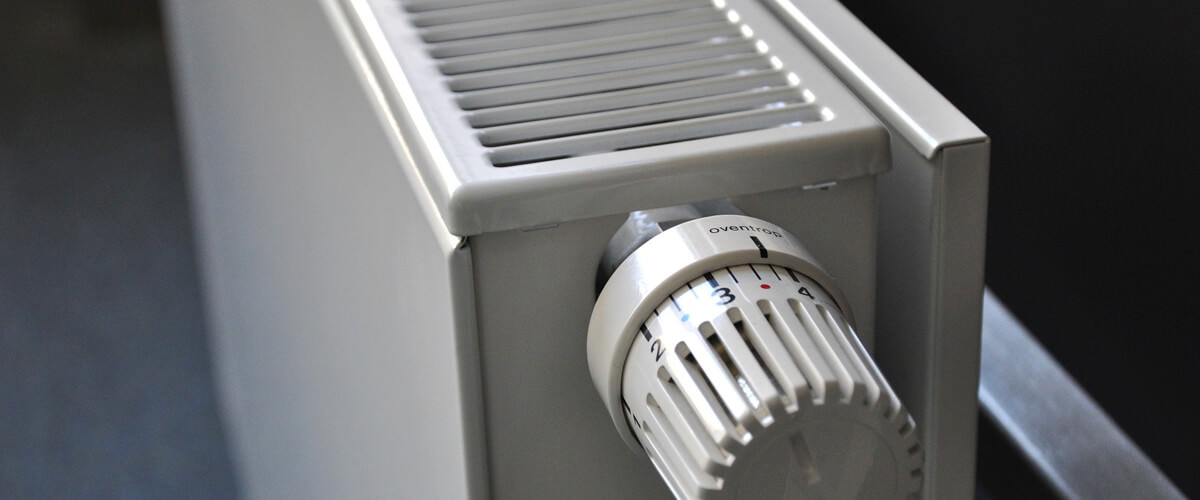
Ideally, your room should always be nice and warm, but we all know that bathrooms can get extremely cold in winters while some are naturally cold because of their location. Rooms in old houses with high roofs can also get very cold and heating them can be quite expensive. Now you can easily keep your bathroom warm in any weather by simply installing a suitable radiator. There are many different types and styles available so you will have no problem finding the right one for your bathroom.
Space Saving Options
Apart from the cost, radiators differ in size, design, heating capacity and installation type. When space is not a constraint, you can opt for freestanding versions or purchase wall-mounted ones if you wish to save space. Freestanding ones are ideal when it is likely that you’ll move them from one corner of the room to another, but they will need to be wired into a spur socket for safety. Wall mounted ones are great if you know where you want your heater to live, and you do not intend to move it. You should be prepared to pay for installation, and you may need to pay extra for this.
If you are keen on buying a wall-mounted radiator, make sure you know the size is suitable for the space available in your bathroom. You should ideally make sure there is at least 2-4 inch gap on every side of the radiator so air can flow properly.
Economical
Almost all new radiators are very economical to use. They won’t leave you with a huge energy bill as some of the outdated models. If you are concerned about your usage, try to buy one that is particularly economical and will switch itself off when your room has reached its desired temperature. Designer radiators, which, although not cheap, will make a style-statement that will instantly uplift the decor of the room.
Compact Radiator
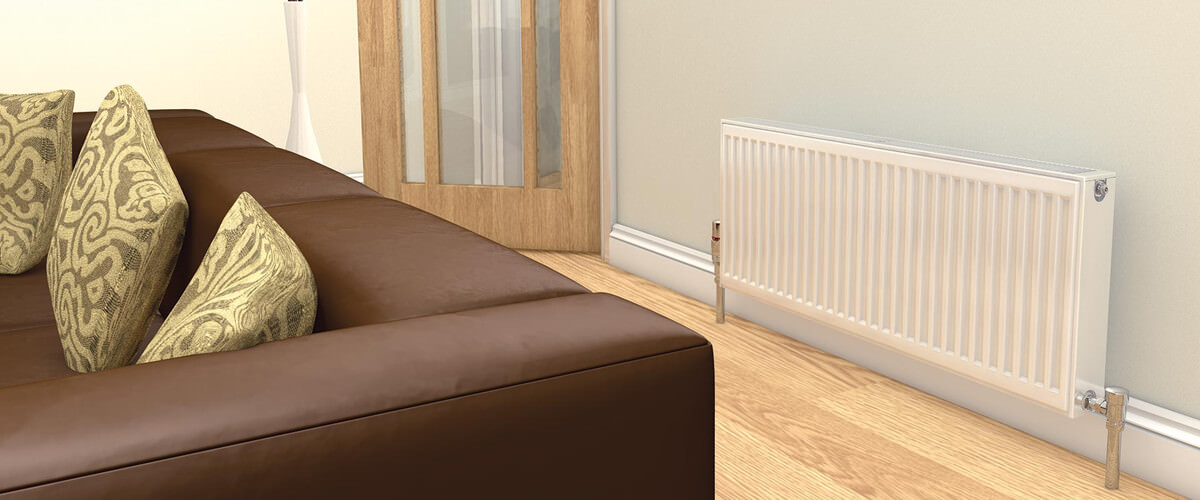
As the product options in this category come in a wide variety of shapes, designs and sizes, you must first decide which units provide the appropriate heat within a particular area. Double-panel Compact radiators will produce the most heat although they take up slightly more room. Single-panel Compact Radiator is slimmer and ideal for smaller dimensions.
Designer Radiators
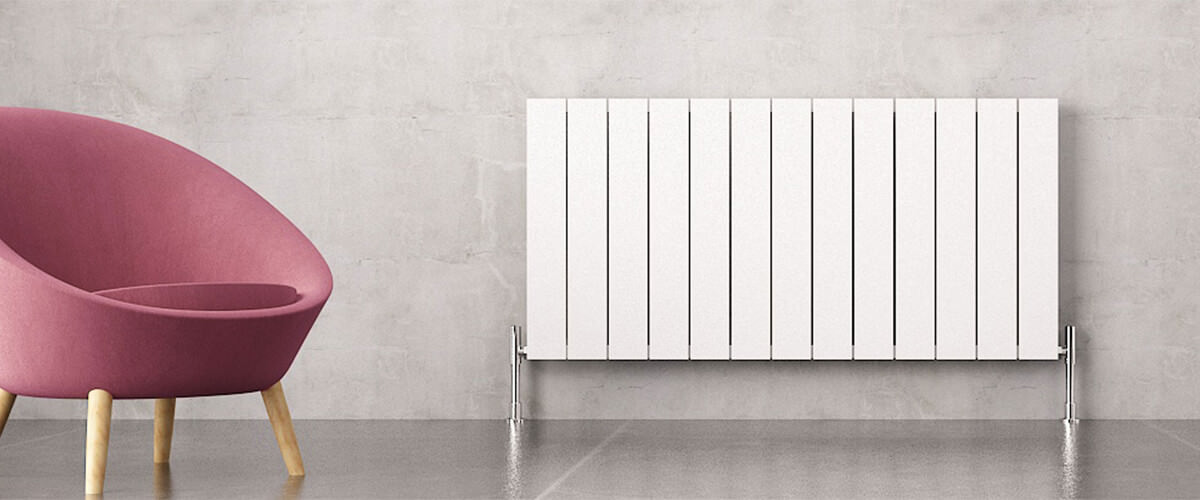
Designer radiators are a stunning alternative to a decorative artwork to improve the bathroom decor. Besides, they also double-up as efficient heating appliances. What previously were big chunky pieces of metal have now transformed into modern designer models that are a sight to behold. World-class designers have lent their creativity to come-up with some superb pieces that are simply a class apart. If you look at some of the radiators you can buy these days; you’ll see why they are so popular.
An emerging trend in designer radiators over recent years is the use of soft, rounded, stream-lined curves and shapes. This can add a more elegant and feminine feel to the overall environment, as well as help the radiator blend in more. The practical side is that they are far safer in the unfortunate event of a slip and fall.
Merge With The Decor
Some of the new model radiators have refreshingly new designs and styles. Some of them may be mistaken for towel rails whereas others quite simply look like a partition in a room or even a bit of tubing that has been quickly wrapped around a pole. No matter what sort of home you live in and what sort of style you like, you can find a radiator that will stand out or simply blend in.
Radiators are far more efficient than they used to be heating up homes quickly and efficiently. They also work with the latest technology, to heat your room to the preferred temperature and keep it that way for as long as you wish. Some radiators can be controlled online or from a smartphone. You can further read our Style Guide on Designer Radiators.
One of the biggest trends in recent years when it comes to mixing and matching decor is the creative combination of old traditional and modern styles. Old cast iron radiators are still highly sought after for this reason.
Column Radiators
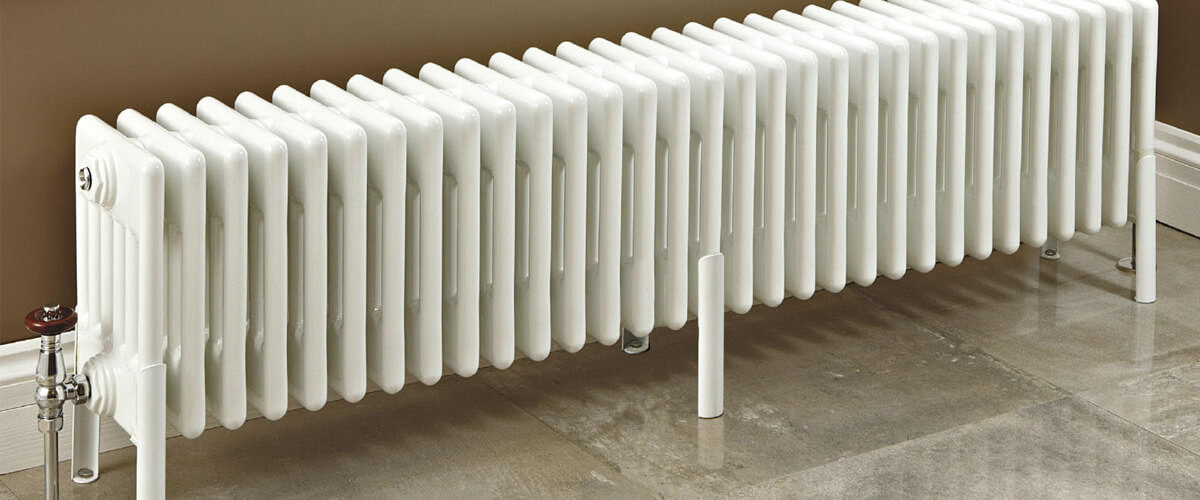
Tubular models are also referred to as column radiators. As opposed to a short and stocky design, these units are heighted. They have an exceptionally good heat performance with 120 degree centigrade maximum working temperature, and are suitable for being connected up to the central heating. There is a vast array of attractive styles and sizes on offer which are great for any home, whether traditional or modern, and the designs include two, three or four columns, which are either vertical or horizontal. Unlike ordinary models, these offer an ambience of style and luxurious living, just as it was back in the days when they were first created.
Broad Range of Wattage Output
There is a broad range of wattage output, depending on your requirements and the size of the room you are placing the radiator in. The standard colour has always been white, however that has now changed, and there is a wide choice on offer including a dark volcanic shade, and a whole array of enticing colours by demand, so it is possible to have radiators that blend in with your living space, furniture and fittings. The products are also backed up by a very long manufacturer's guarantee, which gives you peace of mind and assurance.
Fitting these types of radiators on to a suitable wall space is easy, and they are supplied with sturdy wall brackets. If the walls in your property are not strong enough, for example, if they are just partitions, then strong support feet with tightening screws, which easily fix on the floor are available. If you would like to place it in a low-down position, and it is under 1000mm wide, than you can simply attach two stylish support feet; if it is over 1000mm wide, then it will require three of them. Bleed valves, blanking plugs and air vents are all supplied when you make your purchase from our on-line store.
Cast Iron Radiators

Structurally, a traditional cast iron radiator, as a unit, comprises columns and sections, in the form of tubing, fixed in vertical and horizontal directions, which are legendarily called as ‘coils’, for easy reference. It also consists of a pipe, to link to the boiler, whereas, an electric type of cast iron radiator functions without pipes. The traditional type also consists of a valve that plays a key role of controlling the water flow or steam, letting it through to the coils that get heat with the speed of the flow, determining the heat the radiator will emit. The technical precision of these radiators is such that it can heat your home more powerfully than believed; therefore, it has proven to be the most effective and favourite radiators. These mostly feature Victorian Design, so you would select one of these to give a dramatic look and traditional feel. These have been proven to be the fastest and efficient heating system.
Cast iron radiators are therefore still very popular, particularly with those who like to mix their decor giving their home a more stylish, old-fashioned look and feel.
Flat Panel Radiators
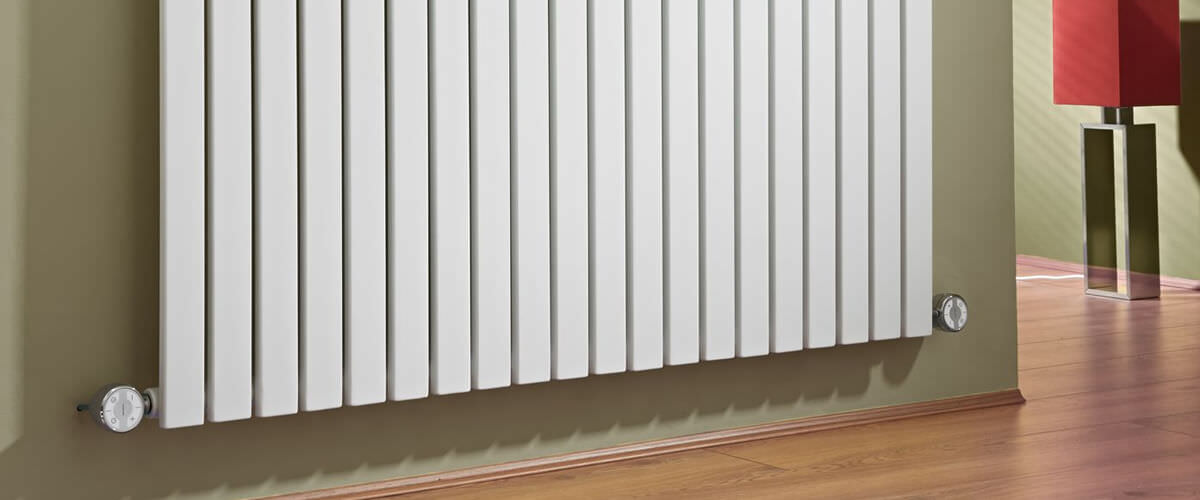
Flat Panel radiators are also called Flat fronted radiators and carry a design which is suited to minimal sensibilities. In this kind of radiator, the fins have been cropped from the edges so that they are almost hidden from view and also have a minimal projection from the wall.
Some flat panelled radiators have been created with designers in mind, with clean lines and a high quality finish. They come with simple design and have a plain flat top instead of a grille. The majority are design replicates to the luxury designer ones but are a less expensive, commercial alternative. These may protrude more into the room and with the top covered with a grille.
Flat panel radiators have become especially popular and are currently leading the trends in radiator design. Highly functional floor-to-ceiling flat panel radiators have become particularly fashionable and are increasingly being installed in homes and offices.
Flat-panel radiators generally come in the biggest variety of designs and are made to blend in beautifully with almost any arrangement.
Low Surface Temperature (LST) Radiators
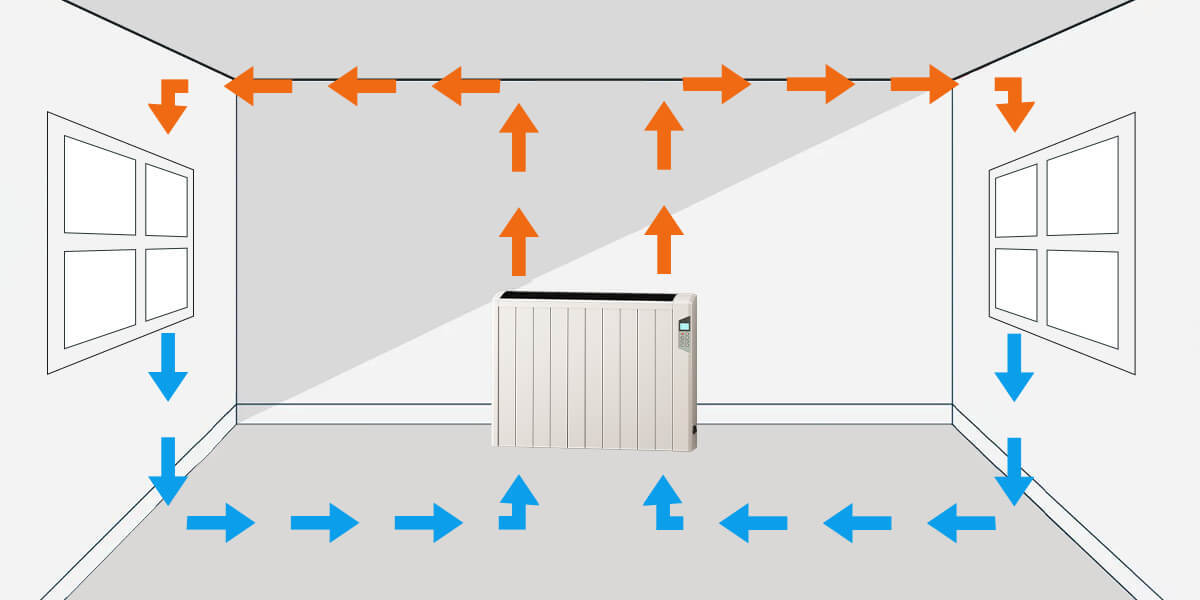
As the name implies, the external surface of this type of radiator stays at a much lower temperature and is almost cool to the touch while still heating the room. Any contact with its surface will keep you safe from potential burns or scalding.
The LST radiators' unique design uses naturally convected heat, unlike the standard radiators that combine convected and radiated heat. These radiators also have much lower volumes of water flowing through them, so they can quickly respond to temperature output adjustments. A faster thermal response puts less demand on the heating source, so it does not have to work as hard. Therefore, fuel and energy use is reduced, improving efficiency and reducing carbon emissions. This also decreases the overall running costs of the appliance.
LST radiators are a much safer choice in several applications, especially those under regulatory compliance. This includes hospitals, hotels or rental homes, schools, and nursing homes, where keeping visitors and residents safe is extremely important. Some LST units have their surfaces painted with MRSA-resistant paint. In contrast, others carry an antibacterial finish, adding to the list of advantages which makes them perfect for use in the sensitive hospital and clinic environment.
The Right Radiator
Given the sheer variety of radiators, it can be difficult to know which one you should buy. Below we have showcased some of the best radiators from MHS, one of the leading makers of radiators. These units combine attractive looks and superior technology and function.
Why Select Mhs Designer Radiators?
MHS has been creating designer radiators for decades with designs and styling so attractive that you are left spell-bound. Coupled with their efficient performance and latest hi-tech functionality, MHS appliances have stolen the hearts of discerning homeowners and professionals. With a vast range of colours, designs and styles, MHS offers a model for every home to update the designer quotient of your home.
